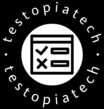Software testing is a crucial process in the software development lifecycle that involves evaluating and verifying that a software application or system meets the specified requirements and functions correctly. It aims to identify defects, ensure quality, and validate that the software performs as expected under different conditions.
Types of Software Testing

- Manual Testing:
- Exploratory Testing: Testers explore the application without predefined test cases, using their creativity and intuition to find defects.
- Ad-hoc Testing: Similar to exploratory testing but less structured, often used when time is limited.
- Automated Testing:
- Unit Testing: Focuses on individual components or units of the software to verify each part functions correctly.
- Integration Testing: Ensures that combined parts of the software work together as expected.
- Functional Testing: Verifies that the software functions as per the specified requirements.
- Regression Testing: Ensures that new code changes do not adversely affect existing functionalities.
- Performance Testing: Evaluates the software’s performance under specific conditions, such as load and stress testing.
- Security Testing: Identifies vulnerabilities and ensures that the software is secure from attacks.
Levels of Testing
- Unit Testing:
- Conducted on individual components or modules by developers.
- Often automated to quickly identify issues at the earliest stage.
- Integration Testing:
- Tests the interaction between integrated units or components.
- Ensures combined parts work together correctly.
- System Testing:
- Tests the complete and integrated software system.
- Validates the end-to-end system specifications.
- Acceptance Testing:
- Conducted to determine whether the software is ready for delivery.
- User Acceptance Testing (UAT): Performed by end-users to ensure the software meets their needs and requirements.
Common Testing Techniques
,dsldkjnsldknlsnlndcls
- Black Box Testing:
- Focuses on the input and output of the software without knowing the internal code structure.
- Includes functional testing, system testing, and acceptance testing.
- White Box Testing:
- Involves testing internal structures or workings of an application.
- Includes unit testing and integration testing.
- Gray Box Testing:
- Combines both black box and white box testing methods.
- Testers have partial knowledge of the internal structures.
Testing Tools
- Selenium: For web application testing (automation).
- JUnit: For unit testing in Java applications.
- TestNG: For more flexible and powerful testing configurations.
- JIRA: For issue tracking and project management.
- Postman: For API testing.
- LoadRunner: For performance testing.
Best Practices in Software Testing

- Early Testing: Start testing early in the development process to identify and fix defects promptly.
- Automate Where Possible: Automate repetitive and time-consuming tests to save time and improve accuracy.
- Continuous Integration: Integrate testing into the CI/CD pipeline to ensure continuous quality.
- Comprehensive Test Coverage: Aim for high test coverage to ensure most parts of the application are tested.
- Regular Code Reviews: Conduct code reviews to catch potential issues early and improve code quality.
- Use of Test Metrics: Track and analyze test metrics to improve testing efficiency and effectiveness.
Software testing is a dynamic and integral part of software development that ensures the delivery of high-quality software. By employing a combination of manual and automated testing techniques, adhering to best practices, and using appropriate tools, teams can effectively identify and address defects, ensuring robust and reliable software systems
